We use cookies and other technologies to personalize your experience and collect analytics.
Tools from my chest Frida Orupabo
Frida Orupabo Tools from my chest
23 May – 5 July 2025
Modern Art is pleased to announce an exhibition of new work by Frida Orupabo. This is her second solo exhibition with Modern Art. Click here to book an appointment.
Frida Orupabo’s large scale sculptures and collages begin with the colonial photograph. Sometimes, she uses actual images from historical archives, while at others the images she sources from various means – eBay, Tumblr, magazines or B movies – evoke the history of the medium of photography and its role in the violent objectification of non-white subjects under the auspices of ethnography.
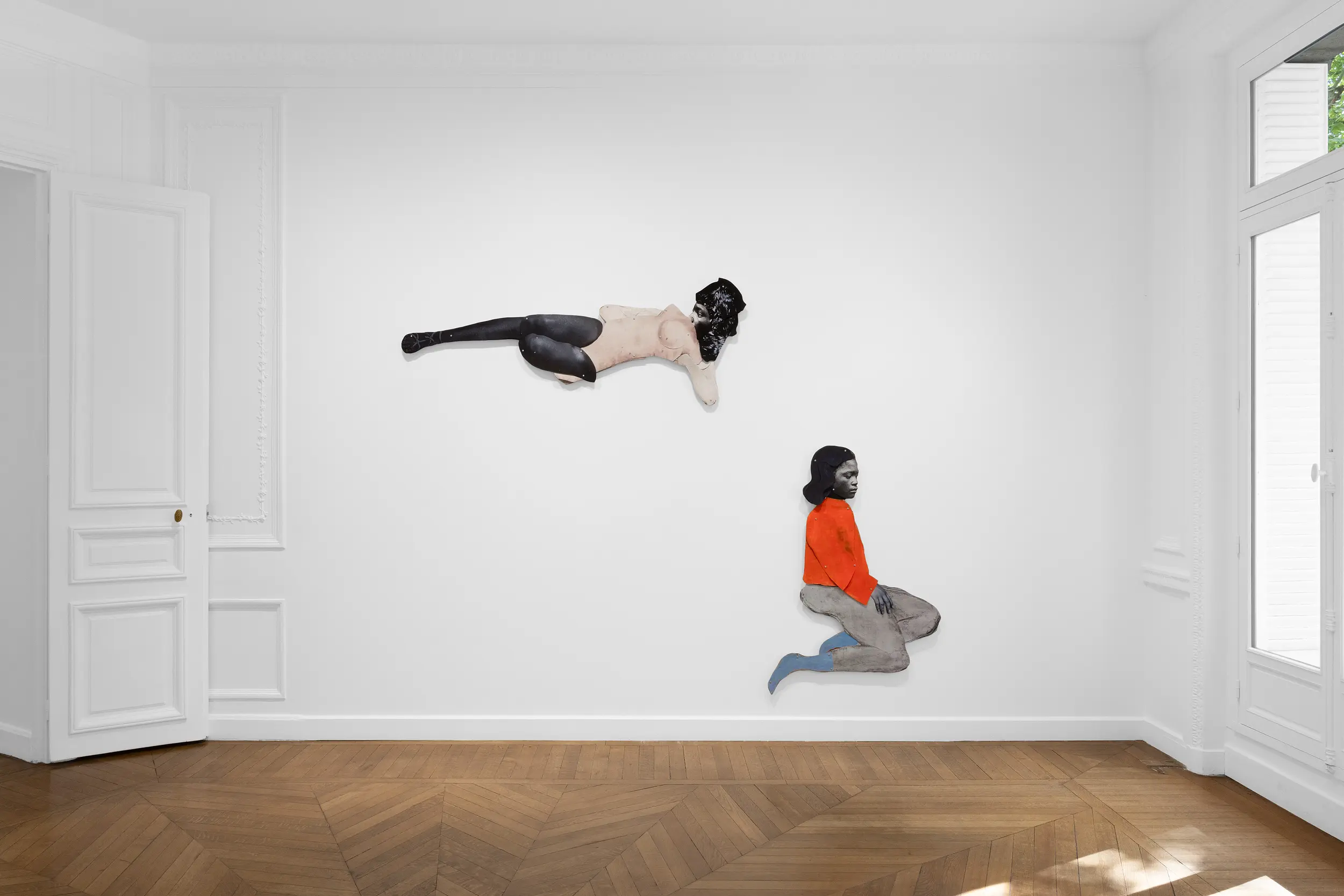
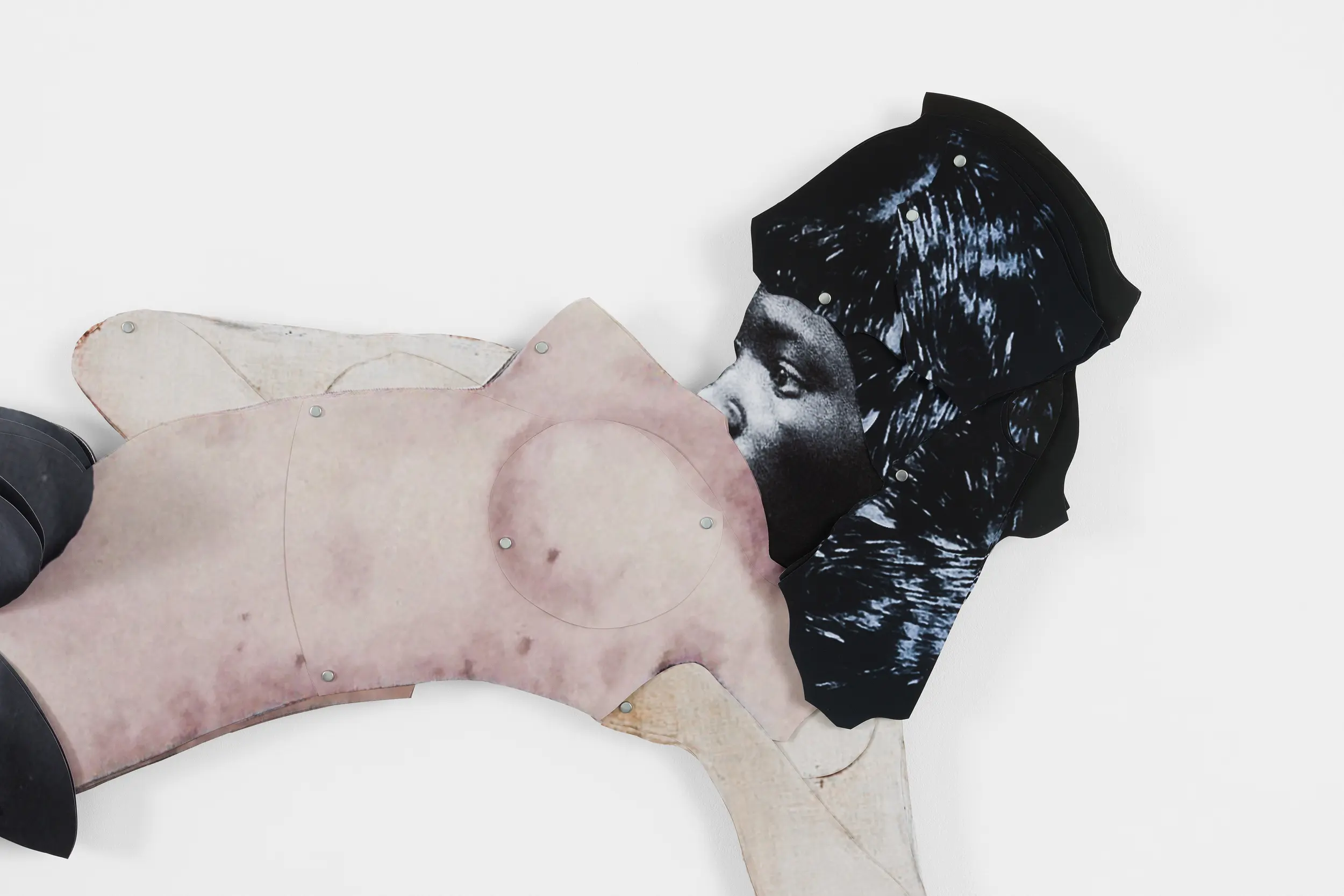
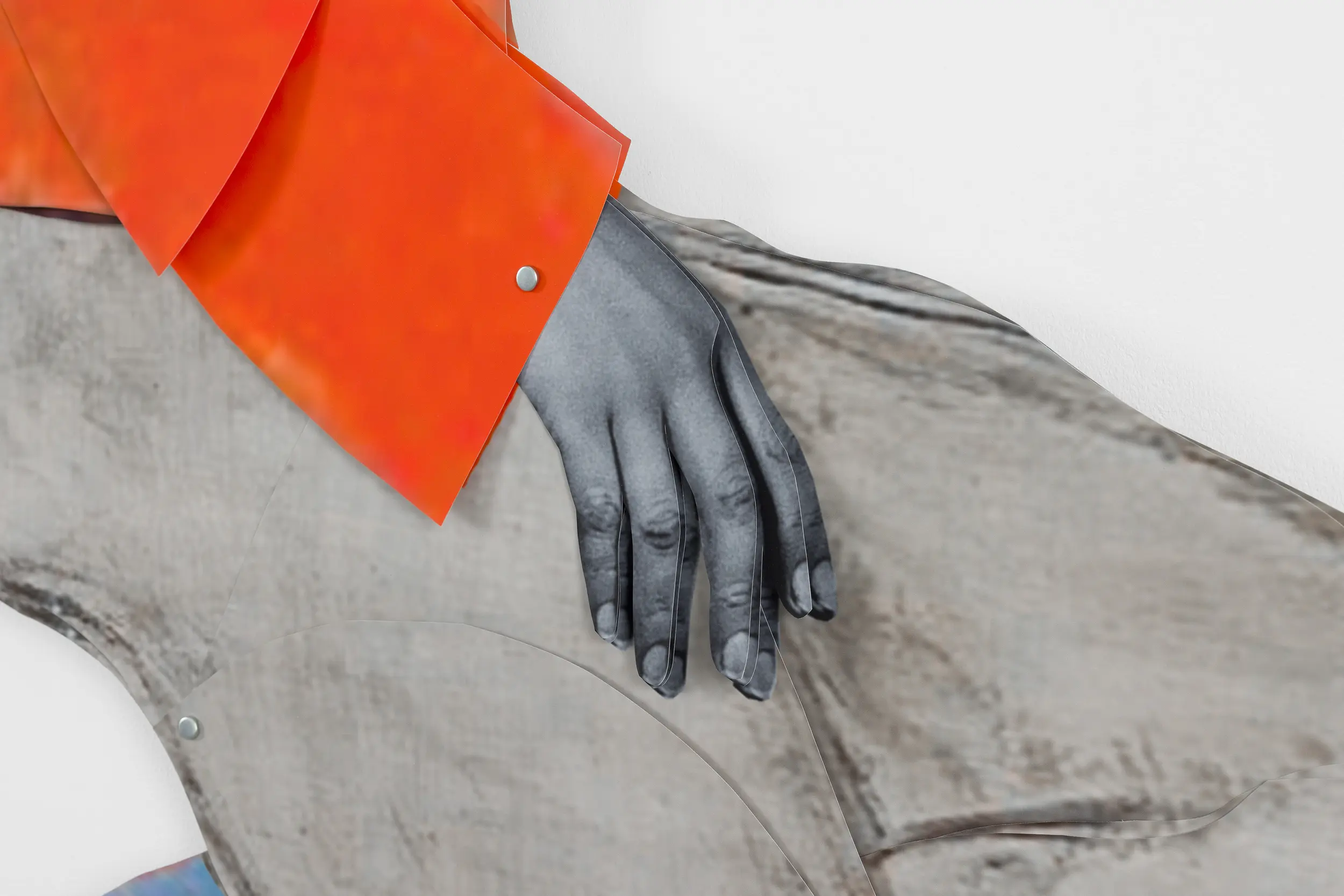
While Orupabo’s works reference these original fraught images, her figures are created and enlivened anew. They become subjects with the capacities of strength, power and resistance. Orupabo started making collages from family photographs in her late teens as a way of understanding her own heritage and family unit. She originally used a scanner to digitize film photographs and used Microsoft Paint to alter and graft parts of images onto others, and in so doing creating her own narratives. She continued to make collages as an adult while studying sociology and working as a social worker, publishing her archive of collected and reconstructed images on her Instagram account, @nemiepeba.
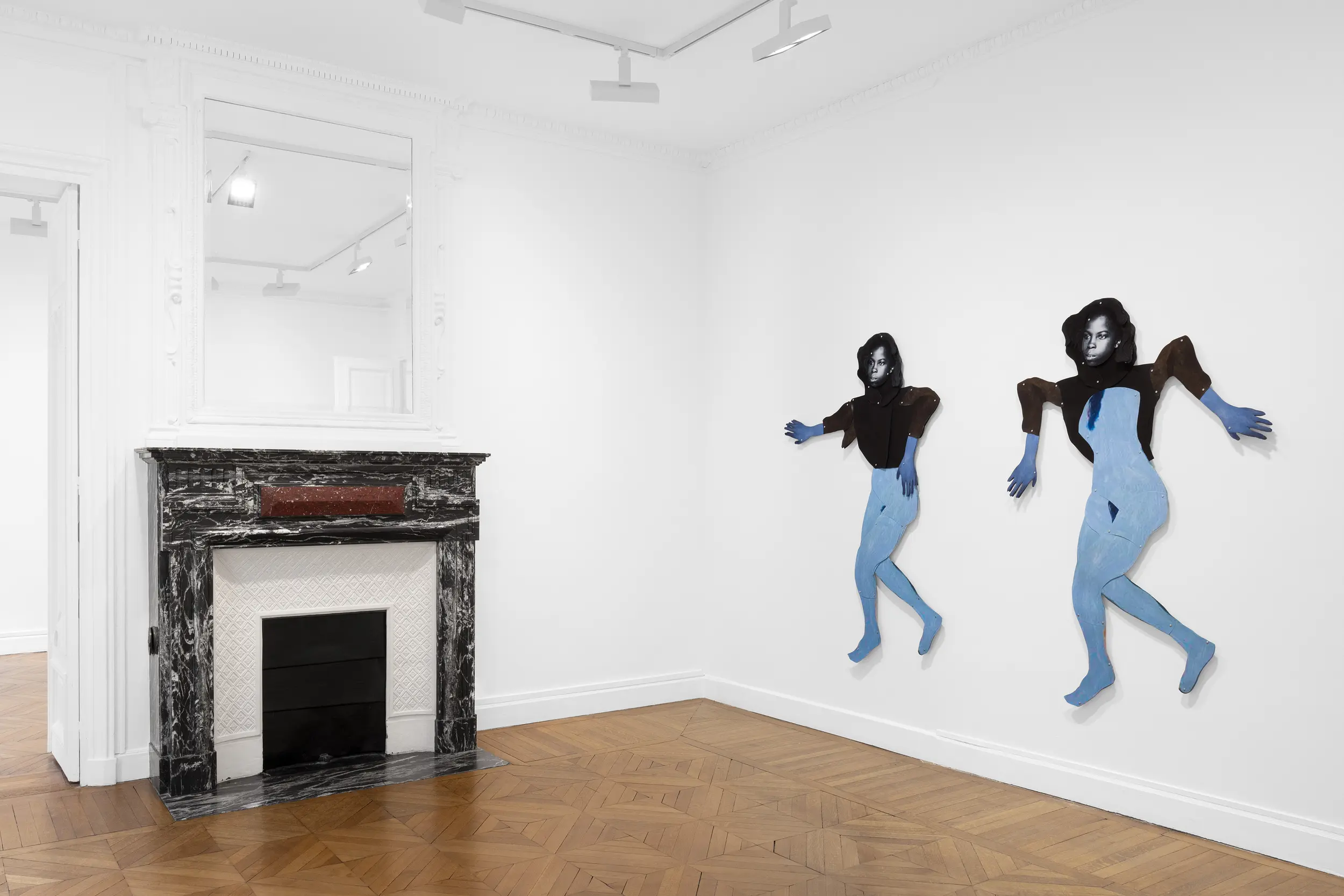
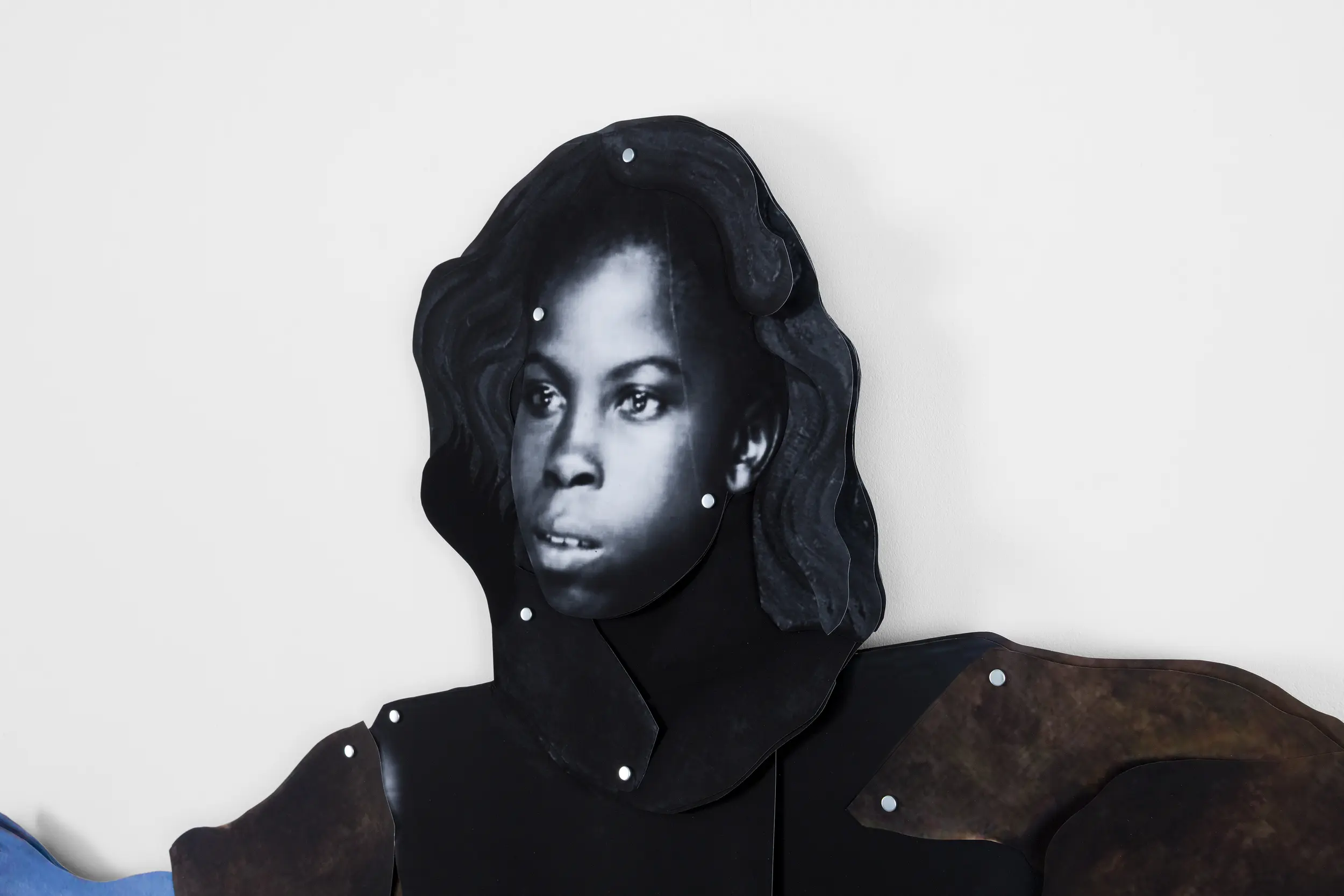

Orupabo’s new body of work for her exhibition at Modern Art is partly influenced by the paintings of the African American artist, Bob Thompson. Thompson’s figurative compositions made in the mid 20th century reinterpret the subjects of the Old Masters in enigmatic, vivid, surreal and often disturbing portrayals of collective life. The body is central to Thompson’s work, and his figures – coloured in browns, pinks, blues, yellows, or reds – are often the locus of violence and generational trauma. In a certain way, then, the works are themselves about bearing witnesses to these histories. In parallel, Orupabo’s work also offers an act of bearing witness to its subjects, to their possible experiences and the structural conditions under which their lives were or are lived.
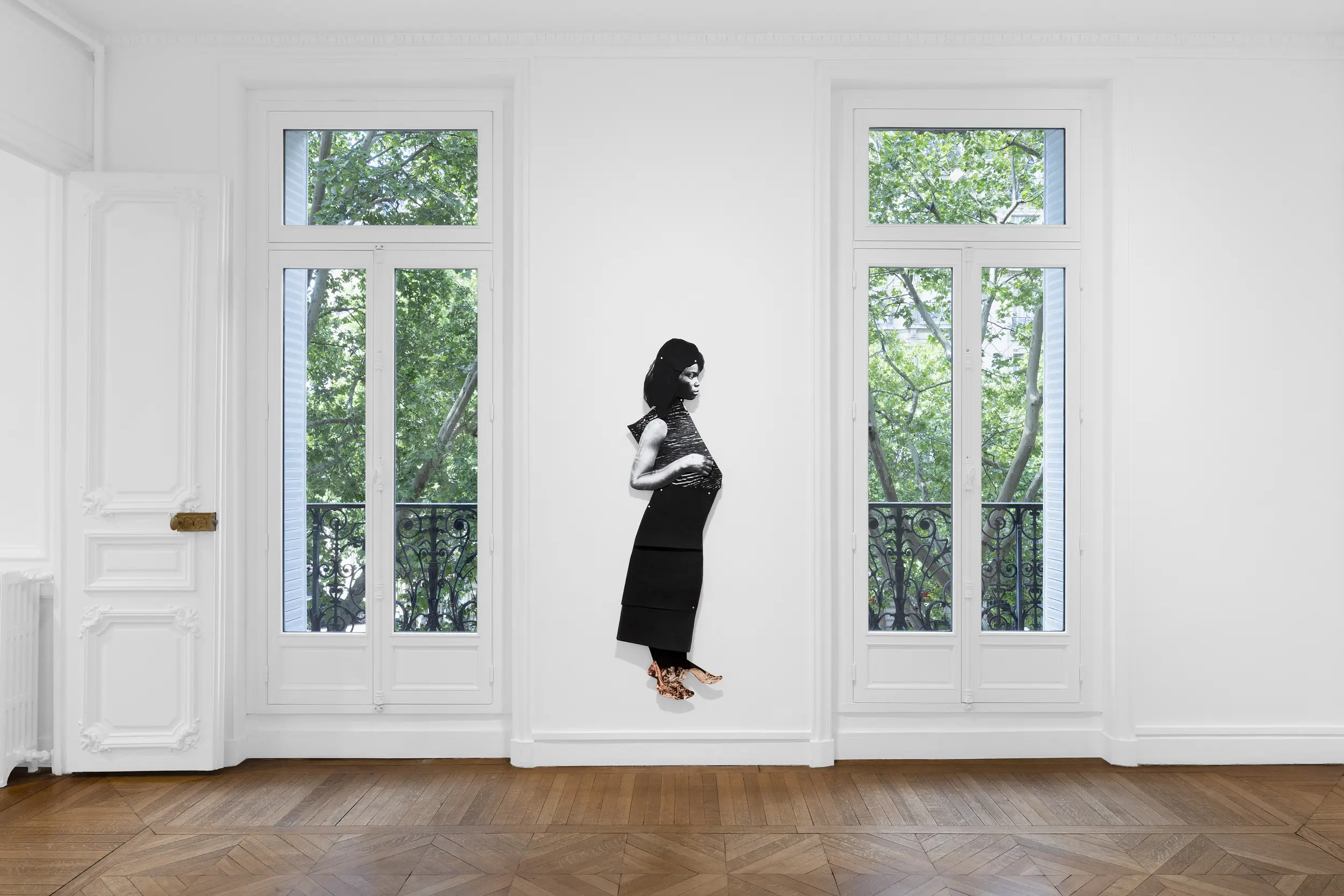
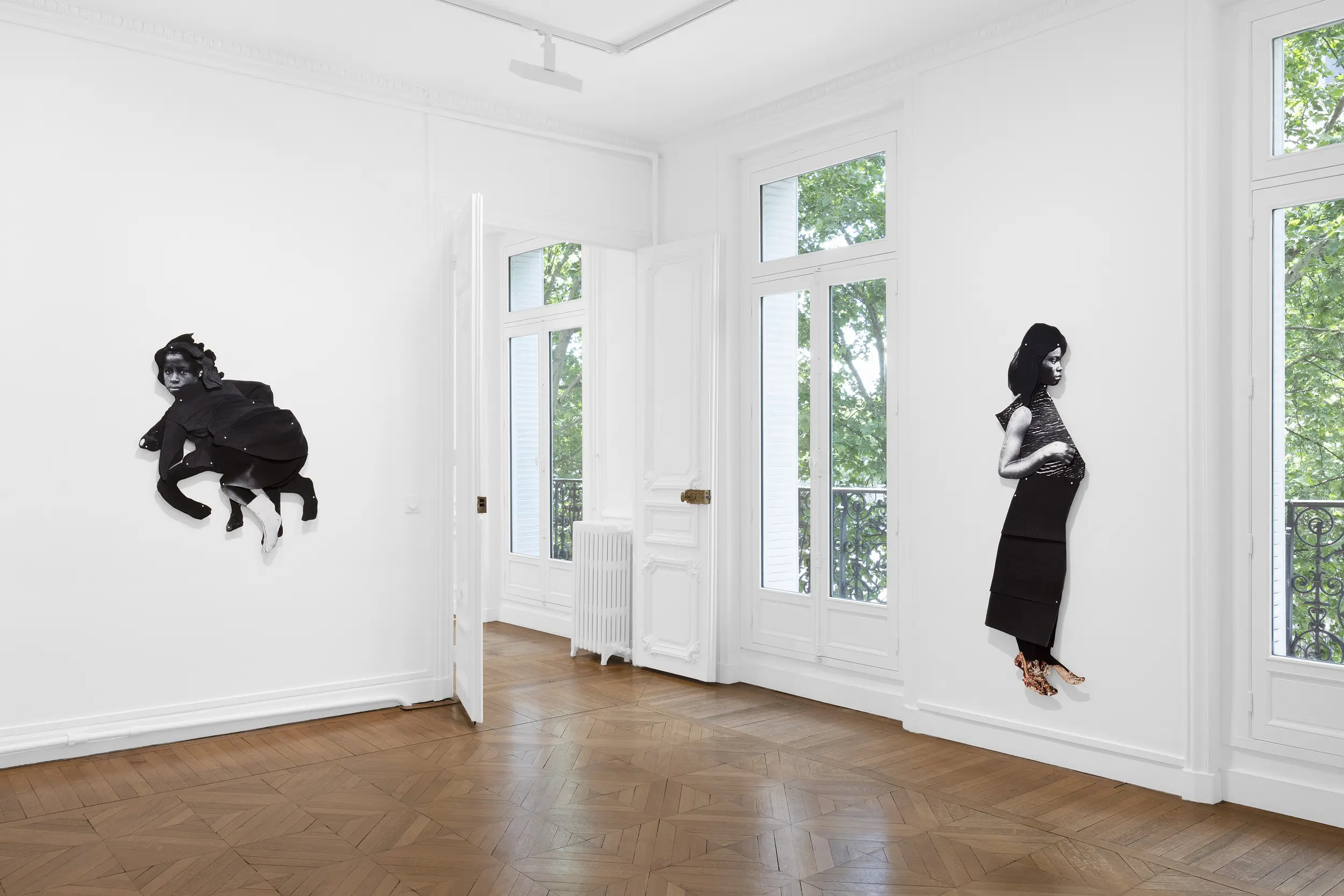
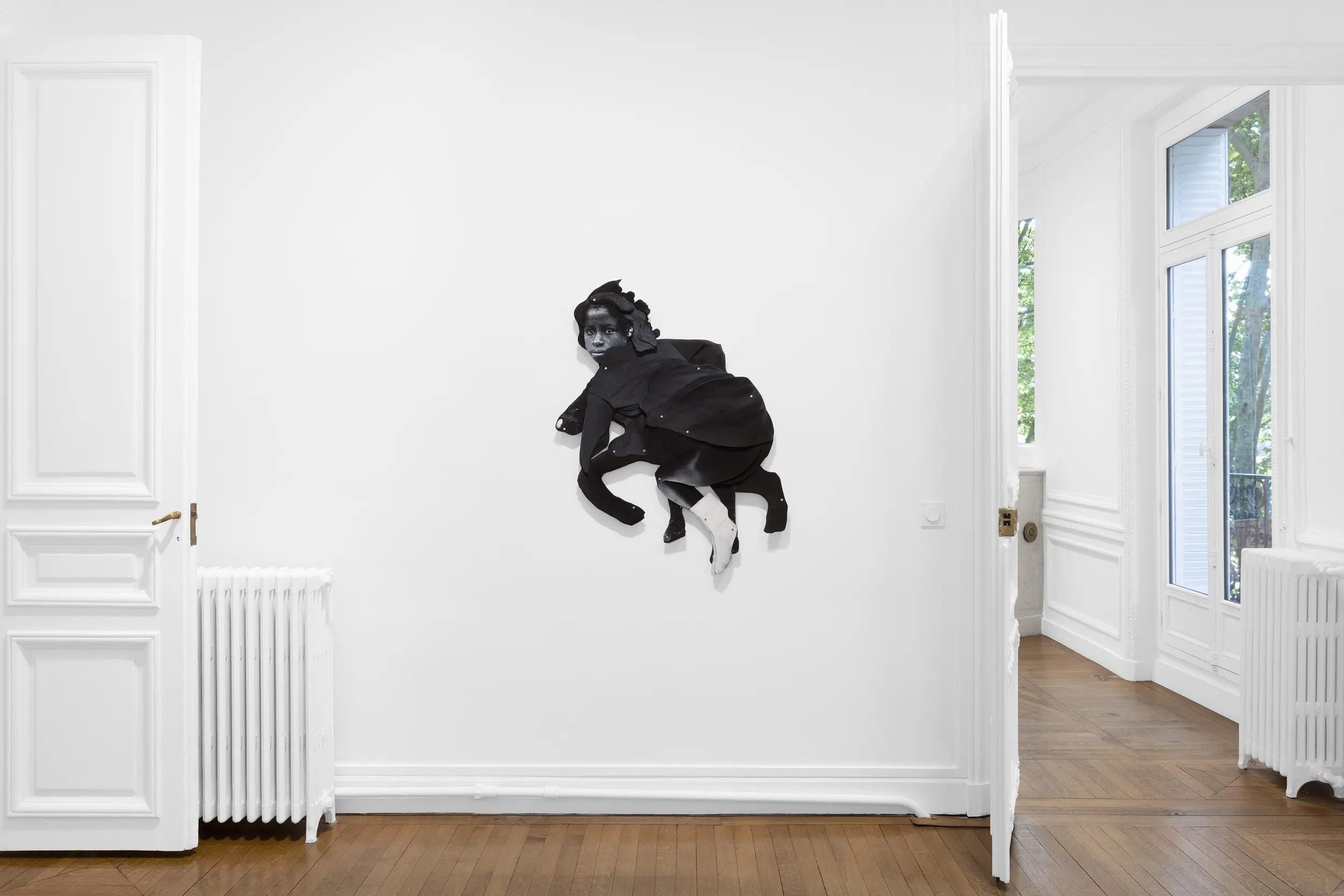
Entering the space, the visitor is greeted by a large, free-standing sculptural collage. This young, female figure - unlike much of Orupabo’s faces who stare back at the viewer - tensely averts one’s gaze; her body pinned together in different physiques and skin tones. Her impenetrable, pensive face appears again further into the exhibition in several of the wall-based, paper collages.
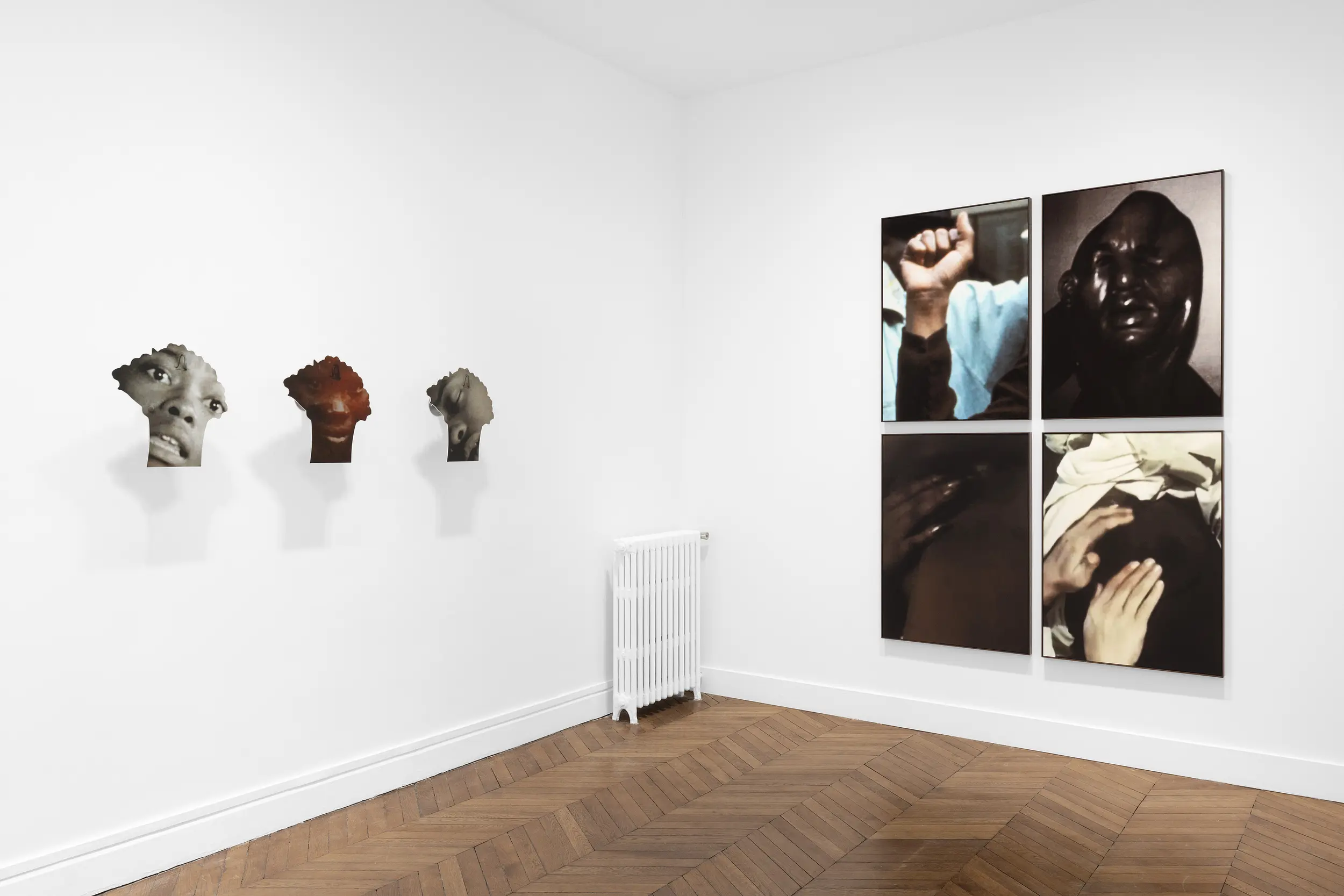

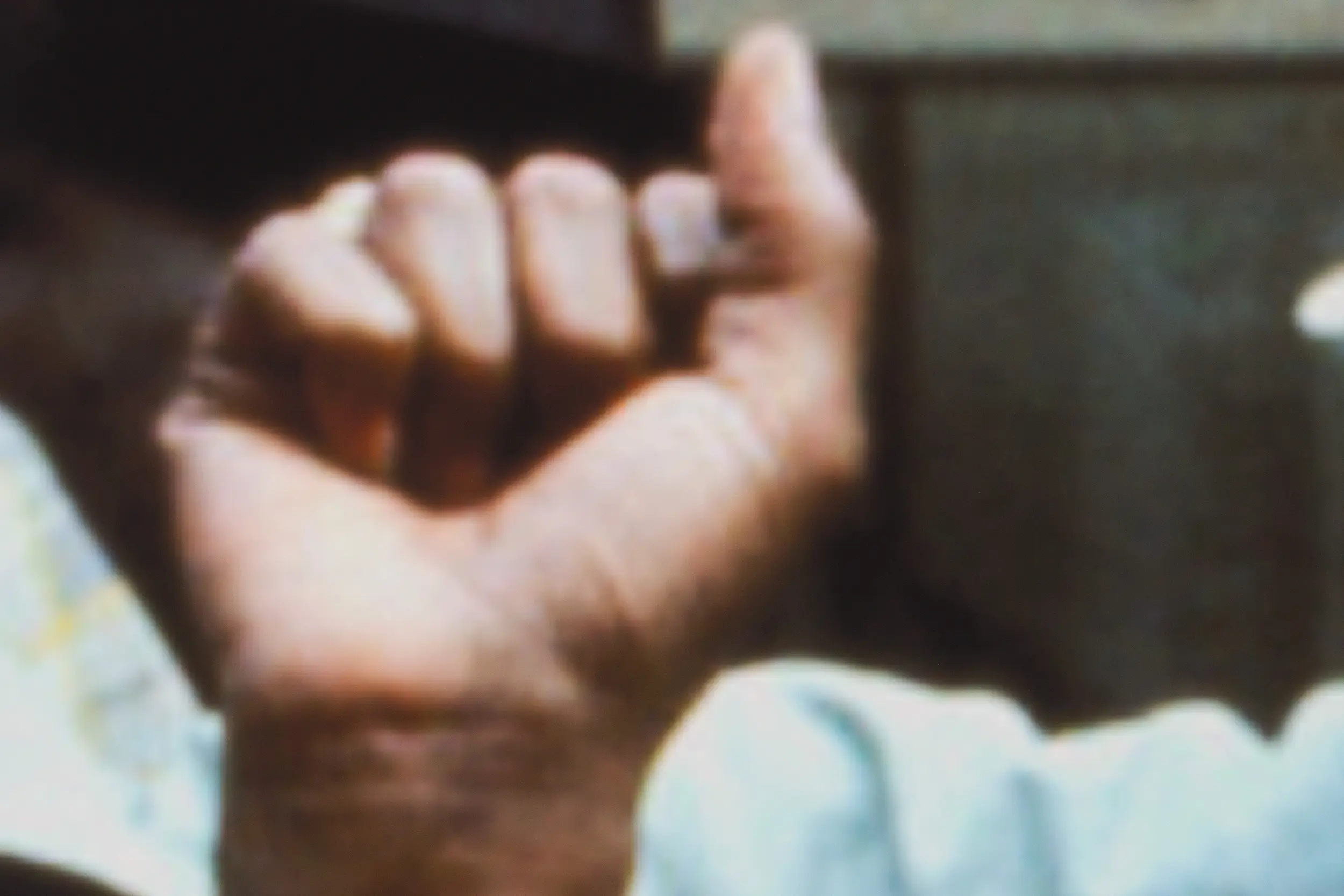
These sit alongside a new set of metal sculptures which are shaped in the silhouette of a bouquet of flowers, each displaying one of three fragments of the same woman’s face at different moments of time. Her face communicates a prism of possible states of mind: pleasure, distress, fear, or resignation. What is happening to this woman outside of the frame is unsettlingly unknown. Like much or Orupabo’s collages in which bodies are cut, cropped and reattached, the process of making echoes of the racial and gender-based violence that the subjects of Orupabo’s works may themselves have experienced. As such, these figures, objectified as they were by the camera, become animated subjects with their own minds, gazing back at whomever is looking.
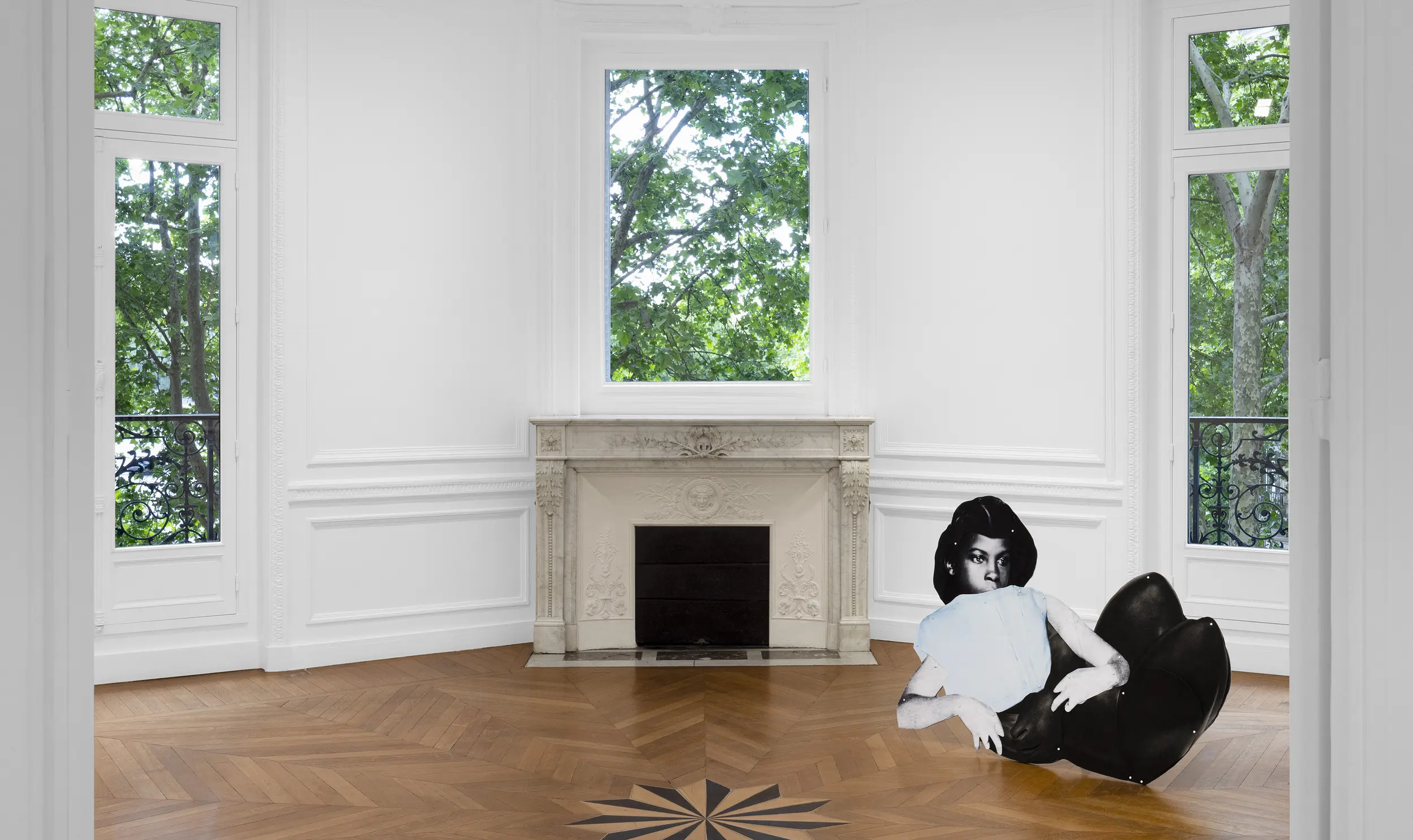
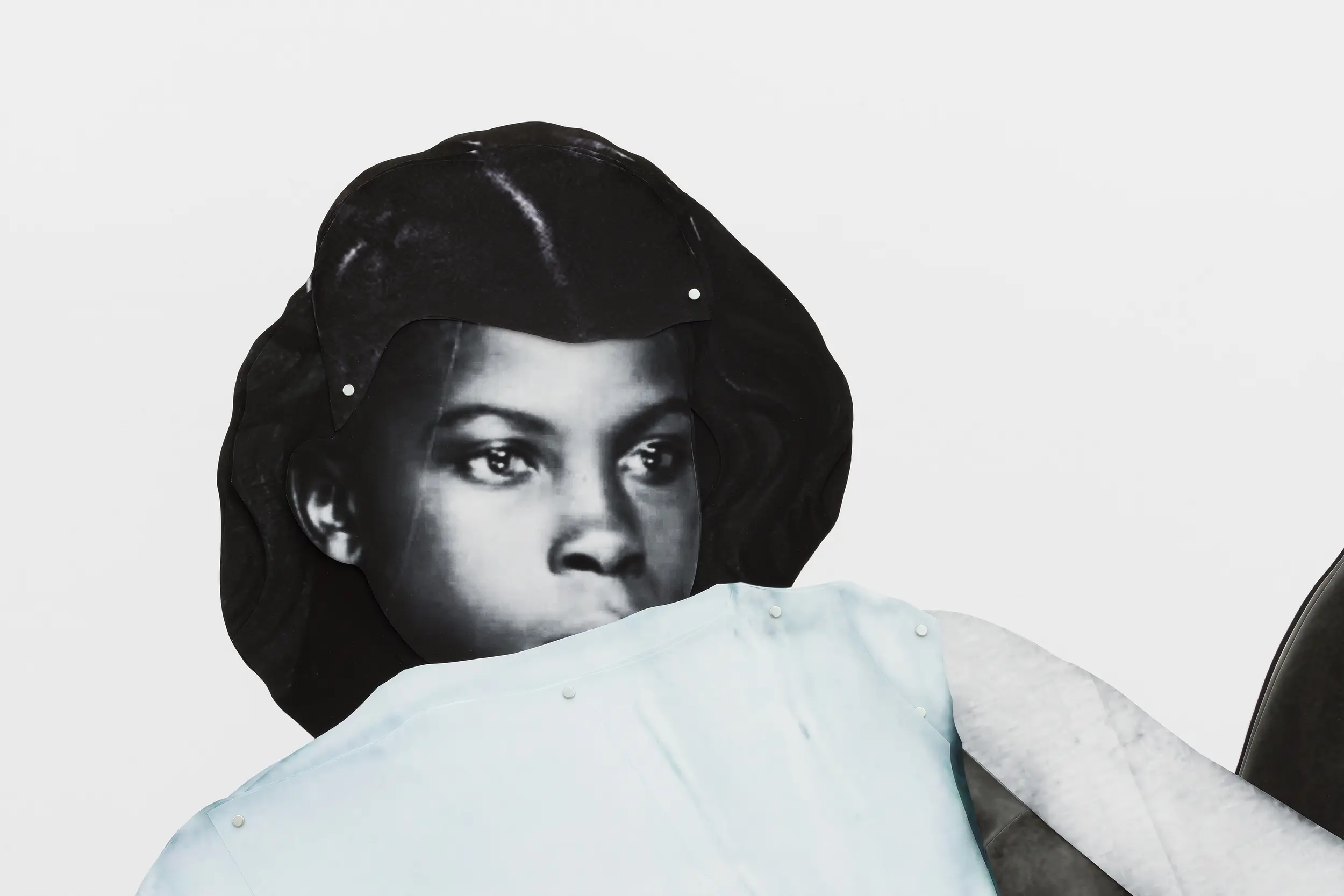
Frida Orupabo was born in 1986 in Sarpsborg and lives and works in Oslo. Selected solo exhibitions include Astrup Fearnley Museet, Oslo (2025); Bonniers Konsthall, Stockholm (2024); Modern Art, London (2023); Fotomuseum Winterthur, Switzerland (2022); Kunsthall Trondheim, Norway (2021); Stevenson, Johannesburg, South Africa (2020); Kunstnernes Hus, Oslo; Portikus, Frankfurt am Main, Germany (2019); and Galerie Nordenhake, Berlin, Germany (2019). Selected group exhibitions include Goldsmiths CCA, London (2023); The Photographers’ Gallery, London (2023); Modern Art, London (2022); Kiasma Finnish National Gallery, Oslo, Norway (2022); Hasselblad Foundation, Gothenburg, Sweden (2021); Huis Marseille, Amsterdam, the Netherlands (2020); Moderna Museet, Stockholm, Sweden (2019), Serpentine Gallery, London (2017). She has participated in the Munch Triennial, Munchmuseet, Oslo, Norway (2022); 34th Bienal de São Paulo, Fundação Bienal, São Paulo, Brazil (2021); and the 58th International Art Exhibition, Biennale Arte, Venice, Italy (2019). In 2025, the artist was awarded the SPECTRUM Internationaler Preis für Fotografie, presenting a major solo exhibition at Sprengel Museum, Hannover, accompanied by a publication.
For more information, please contact Clément Raveu (clement@modernart.net).
Press Release

Modern Art is pleased to announce an exhibition of new work by Frida Orupabo. This is her second solo exhibition with Modern Art. Click here to book an appointment.
Frida Orupabo’s large scale sculptures and collages begin with the colonial photograph. Sometimes, she uses actual images from historical archives, while at others the images she sources from various means – eBay, Tumblr, magazines or B movies – evoke the history of the medium of photography and its role in the violent objectification of non-white subjects under the auspices of ethnography. While Orupabo’s works reference these original fraught images, her figures are created and enlivened anew. They become subjects with the capacities of strength, power and resistance. Orupabo started making collages from family photographs in her late teens as a way of understanding her own heritage and family unit. She originally used a scanner to digitize film photographs and used Microsoft Paint to alter and graft parts of images onto others, and in so doing creating her own narratives. She continued to make collages as an adult while studying sociology and working as a social worker, publishing her archive of collected and reconstructed images on her Instagram account, @nemiepeba.
Orupabo’s new body of work for her exhibition at Modern Art is partly influenced by the paintings of the African American artist, Bob Thompson. Thompson’s figurative compositions made in the mid 20th century reinterpret the subjects of the Old Masters in enigmatic, vivid, surreal and often disturbing portrayals of collective life. The body is central to Thompson’s work, and his figures – coloured in browns, pinks, blues, yellows, or reds – are often the locus of violence and generational trauma. In a certain way, then, the works are themselves about bearing witnesses to these histories. In parallel, Orupabo’s work also offers an act of bearing witness to its subjects, to their possible experiences and the structural conditions under which their lives were or are lived.
Entering the space, the visitor is greeted by a large, free-standing sculptural collage. This young, female figure - unlike much of Orupabo’s faces who stare back at the viewer - tensely averts one’s gaze; her body pinned together in different physiques and skin tones. Her impenetrable, pensive face appears again further into the exhibition in several of the wall-based, paper collages. These sit alongside a new set of metal sculptures which are shaped in the silhouette of a bouquet of flowers, each displaying one of three fragments of the same woman’s face at different moments of time. Her face communicates a prism of possible states of mind: pleasure, distress, fear, or resignation. What is happening to this woman outside of the frame is unsettlingly unknown. Like much or Orupabo’s collages in which bodies are cut, cropped and reattached, the process of making echoes of the racial and gender-based violence that the subjects of Orupabo’s works may themselves have experienced. As such, these figures, objectified as they were by the camera, become animated subjects with their own minds, gazing back at whomever is looking.
Frida Orupabo was born in 1986 in Sarpsborg and lives and works in Oslo. Solo exhibitions of her work have taken place at the Sprengel Museum, Hanover, Germany (2025); On Lies, Secrets, and Silence, Bonniers Konsthall, Stockholm, Sweden, travelling to Astrup Fearnley Museet, Oslo, Norway (2025); Fotomuseum Winterthur, Switzerland (2022); Kunsthall Trondheim, Norway (2021); Hours After, Stevenson, Johannesurg, South Africa (2020); Medicine for a Nightmare, Kunstnernes Hus, Oslo; The Mouth and the Truth, Portikus, Frankfurt am Main, Germany (2019); and A House is a House, Galerie Nordenhake, Berlin, Germany (2019). Selected group exhibitions at institutions such as Fondation Carmignac, Hyères, France (2024); Brooklyn Museum, Brooklyn, NY, USA (2024); Museum für Gestaltung Zurich, Switzerland (2023); Photography Museum Antwerp, Belgium (2023); Aargauer Kunsthaus, Aarau, Switzerland (2023); Museum of the African Diaspora, San Francisco, CA, USA (2023); The Photographers’ Gallery, London, travelling to Muzeum Fotografii w Krakowie, Krakow, Poland (2023); Malmö Konsthall, Malmö, Sweden (2023); Louisiana Museum of Modern Art, Humlebaek, Denmark (2023); Kiasma Finnish National Gallery, Oslo, Norway (2022); Hasselblad Foundation, Gothenburg, Sweden (2021); Huis Marseille, Amsterdam, the Netherlands (2020); Moderna Museet, Stockholm, Sweden (2019), Serpentine Gallery, London (2017). She has participated in the 15th Gwangju Biennale, Gwangju, South Korea (2024); Munch Triennial, Munchmuseet, Oslo, Norway (2022); 34th Bienal de São Paulo, Fundação Bienal, São Paulo, Brazil (2021); and the 58th International Art Exhibition, Biennale Arte, Venice, Italy (2019).
For more information, please contact Clément Raveu (clement@modernart.net).


